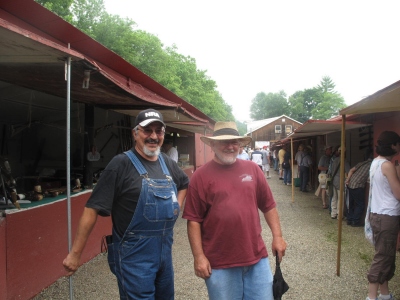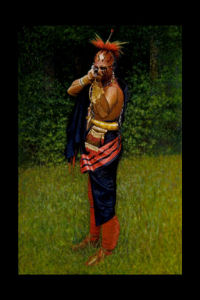|
|
 |
 |
 |
|
|
|
 |
|
 |
 |
 |
|
Following History . . . Following this Website
|
|
|
By Jim Cummings
Most of the photos and stories available here on The Pioneer Times deal with the opening of the west - what is now Kentucky, Ohio, Indiana and Tennessee. But it can be a little daunting if you are just beginning to study these areas. And maps of today don’t always show the names that were commonly used in earlier times.
So to the students, teachers, parents and those just taking an in depth look at history we will be including some maps for you, to both follow history and follow us as we visit living history sites and the roles they played in settling this land.
Settlers coming into Kentucky had a choice of two routes. They could come through the Cumberland Gap or down the Ohio River.
For the settlers, important stops were the last points before heading into the wilderness. When heading down the Ohio River, Pittsburgh (Fort Pitt) or Wheeling was the last outpost.
For settlers coming through the Cumberland Gap, Joseph Martin’s Station was the all important last stop.
|
|
|
|
On May 8, 2010 we will be traveling to Ewing, Virginia to visit the rebuilt Martin’s Station at Wilderness Road State Park. Watch for the photos that tell the story in pictures of why this was such an important stop on the Wilderness Road.
|
|
|
|
|
|
 |
 |
|
Last weekend we traveled to Martin’s Station along the Tennessee, Kentucky and Virginia Border passing through the famed Cumberland Gap. Today travelers do not need to climb the mountains as early settlers did to reach the other side of the gap but travel trough a well lit tunnel.
In coming weeks we will travel to Whitley’s Station (The William Whitley House) on May 22, 2010 and then on to Fort Boonesborough on May 29, 2010 and also for Women on the Frontier on June 12-13. On June 19-20 we will be at Fort Harrod (Harrodsburg).
An important aspect in following the trails of the early settlers is to think not in terms of interstate highways but in terms of waterways and trails. There were only a few select places to cross rivers. The Kentucky River posed special challenges because of the high palisades surrounding much of it.
|
|
 |
 |
|
Settlers coming overland to Kentucky came through the Cumberland Gap after leaving Martin’s Station. You will note the X at Hazel Patch. This was the intersection for deciding between the forts. In the late 1770’s when there were only a handful of stations (forts) settlers could choose Boonesborough or Logan’s or Harrodsburg. It is also important to realize when studying lists of early settlers to these forts that the settlers often moved frequently between them.
|
|
|
 |
 |
|
On May 13, 2010 we will travel to Fort Randolph. Fort Randolph is located in Point Pleasant, West Virginia at the confluence of the Ohio and Kanawha Rivers. Settlers leaving Pennsylvania for the Kentucky frontier left from either Fort Pitt (Pittsburgh) or Redstone. As the population moved westward Wheeling also became a departure point. Settlers would build flatboats at these sites and then float down the Ohio. The flatboats would then be dismantled at their destination and the lumber would be used for housing.When George Rogers Clark mounted his campaign to the Illinois Territory in 1778 he passed Fort Randolph under the command of Captain Matthew Arbuckle. Fort Randolph had just been attacked by 200 Shawnee Indians and when Arbuckle saw Clark arriving and assumed he was bringing reinforcements to the fort.
|
|
 |
 |
|
But Clark continued down the river - his final destination still unknown even to his troops. Fort Randolph had also been the site where Chief Cornstalk was murdered in 1777 which set off murderous raids in the Kentucky country by the Shawnee Indians over the death of their chief.
Also on this map (further down river) is the site of Lochry’s Defeat at the mouth of the Great Miami River. Colonel Archibald Lochry and troops were trying to rendezvous when George Rogers Clark in 1781. Clark’s men had been deserting at an astonishing rate while in Pennsylvania and so he had proceeded down the river without Lochry. Lochry was only a few days behind, but unfortunately Clark had all of the supplies on his boats while Lochry had only men and horses on his. In an effort to feed the starving horses and men Lochry pulled over at the mouth of a creek. Indians attacked and all of his men were either killed or captured. The creek was later named for Lochry. But over the years the spelling was changed to Laughery. In early May this event was commemorated with an event in Friendship Indiana entitled Lore of the Laughery.
|
 |
|
|
 |
 |
 |
|
The National Muzzleloading Rifle Association
By Charles E. Hayes
|
 |
 |
 |
 |
 |
 |
 |
 |
|
Re-enactors today owe gratitude to, and should support, the National Muzzleloading Rifle Association
.
The National Muzzle Loading Rifle Association (NMLRA) was founded in 1933 to promote, support, nurture, and preserve America’s rich historical heritage in the sport of muzzleloading by supporting shooting match competitions, muzzleloading hunting, gun making and safety. The NMLRA is strongly invested in historical re-enactments, exhibits, museums, libraries, and other related programs.
The NMLRA supports regional events, territorial matches and hosts spring and fall shoots (June and September) at Friendship, Indiana. These weeklong events attract shooters and commercial dealers from all over the United States.
The NMLRA has approximately 20,000 members and publishes a monthly magazine (Muzzle Blasts) to keep members informed of event results, pending legislation, how-to articles, historical information and upcoming events.
The NMLRA is dedicated to:
The understanding of, and the ability in, marksmanship with early American muzzleloading firearms.
Match promotion for the purpose of advancing fine accuracy with these arms and the establishment of standard practices for competition.
The recognition and support for the continuing and growing interest in the added challenge of hunting with a muzzleloading firearm.
Greater safety with all firearms, especially with muzzleloading rifles, pistols, and shotguns.
The collecting, preservation, and recreation of antique firearms and related accoutrements, and the recognition of the value of living history re-enactments.
I strongly recommend that all re-enactors support the National Muzzleloading Rifle Association by becoming members. Much of the information and equipment we use and enjoy comes to us either directly or indirectly through the influence of the NMLRA. The current interest and availability of muzzleloaders is because it is directly fostered by the NMLRA.
|
|
|
|
 |
|
|
|
All pictures are of members of the Kentucky Corps of Longrifles, Taken Sat. June 12, 2010 at NMLRA Spring Shoot
|
|
|
|
 |
|
|
 |
|
|
 |
 |
 |
|
Steve White Artist of the Eighteenth Century Frontier
Steve White the 18th Century Re-enactor
By Charles Hayes
|
 |
 |
 |
 |
|
 |
|
Steve White, the artist, is as comfortable and competent holding a brush as Steve White the 18th century re-enactor is comfortable and competent sighting his flintlock rifle. A major reason for this is his familiarity with both the tools of his trade and the tools of his hobby. Steve works with both sets of tools to the point that they become an extension of him rather than simply objects he holds.
Steve White doesn’t simply pick up accoutrements, he uses the accoutrement until it second nature to him. An excellent example is his 1770’s period hunting coat, patterned after the La Mauer coat in the Valentine Museum in Richmond, Virginia. He wore the coat around his house, gallery, and community until he became thoroughly accustomed to the feel and weight of the garment. Now when he wears the coat, it is like adding a second skin rather than putting on a garment.
Steve treats all accoutrements in this manner. His museum research has left him with the knowledge of what is appropriate for the items he uses both at living history events and for props in his paintings of 18th century American Indians.
Steve’s research is not limited to museums. He is an avid reader of Dale Payne’s books which Dale took verbatim from accounts in the Draper Manuscripts. He has the artist’s eye for detail in gleaning facts from print as well as from museum artifacts and line drawings.
Steve is currently working on a series of pictures of Eastern American Indians (his chief John Logan print was featured in the 2009 spring issue of Broadside). Many of his models are American Indians or serious re-enactors.
Steve lives and has his gallery in Maysville, Kentucky. He is a member of the Contemporary Longrifle Association, the Kentucky Corps of Longrifles and the National Muzzleloading Rifle Association. He is currently working to build an annual “rifle frolic” event at Bluelicks State Resort Park near Mt. Olivet, Kentucky. His art work can be viewed at stevewhiteart.com.
|
|
|
 |
|
|
 |
|
|
|
|
|
|
 |
|
|
 |
 |
 |
|
Life Mirrors History
|
 |
 |
|
In 1809 Dr. Ephraim McDowell performed the world’s first abdominal surgery. Mrs. Jane McClure rode 60 miles on horseback in frontier Kentucky to consult with Dr. McDowell in Danville. Without the benefit of anesthesia, and having little of today’s knowledge of germs and antiseptics, Dr. McDowell removed a 22 lb. tumor from Mrs. McClure’s abdomen. The 47 year old, Mrs. McClure stayed in Danville for four weeks before returning home where she lived another 32 years.
|
 |
 |
|
Pioneer Times webmaster and photographer Kathy Cummings spent the last weekend of September, not at The Siege of Fort Boonesborough as planned, but at the emergency room where an abdominal mass was detected. She is scheduled for surgery on Tuesday October 5th. Unlike Mrs. McClure in 1809 all of the most modern conditions will prevail and hopefully work on the websites will continue during recovery.
If you have photos of any of the missed events (Boonesborough, Perryville, Mississinewa etc.) that you would like to send to this website please snail mail photos on CD to the address listed on our contact page. Jim and Kathy Cummings will be out photographing events again as soon as possible.
|
|
|
 |
 |
|
Visit the website of the Ephraim McDowell House in Danville, KY to see and share the prayer Dr. McDowell wrote out before the world’s first, history making abdominal surgery.
|
|
|
|